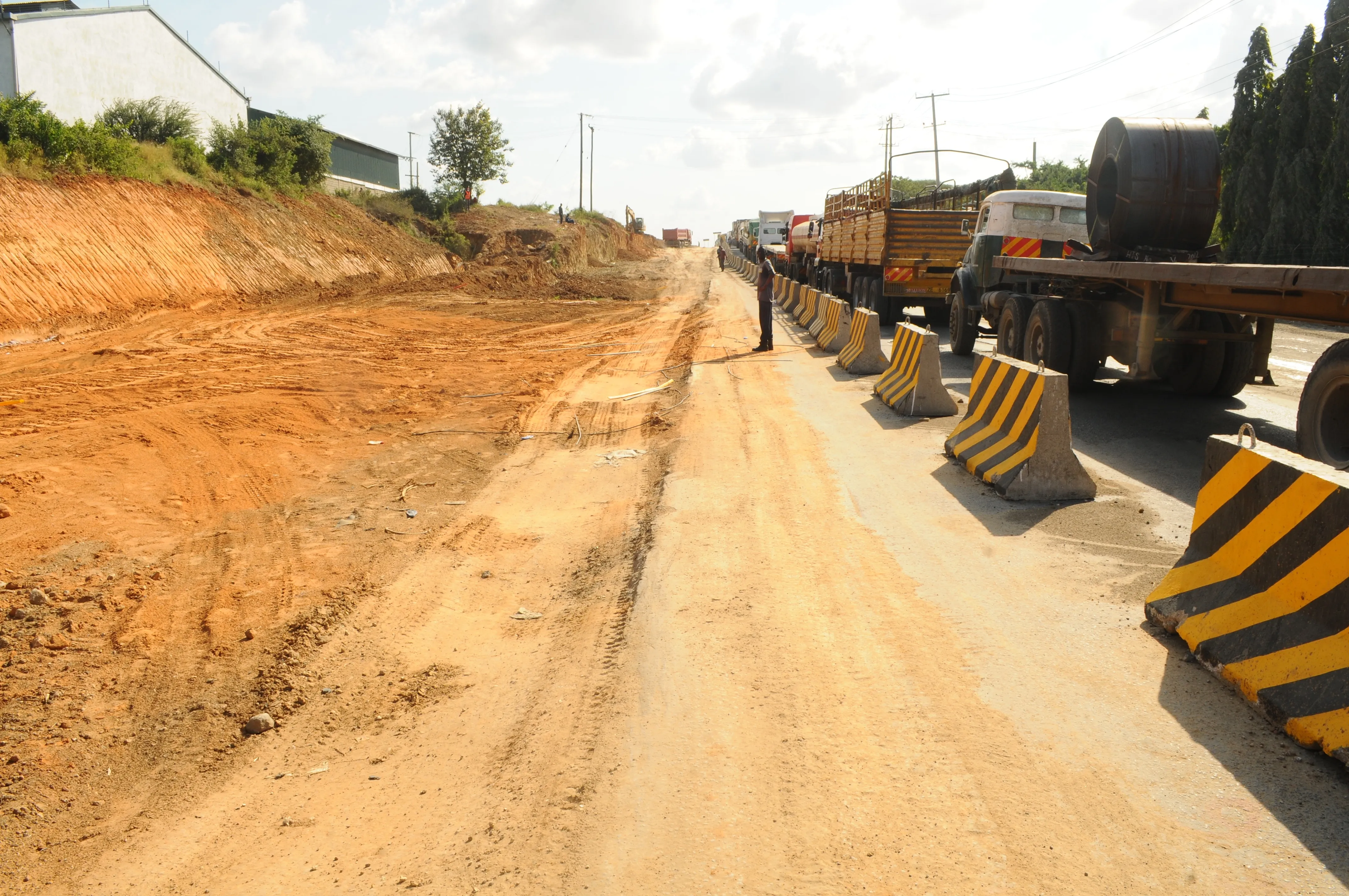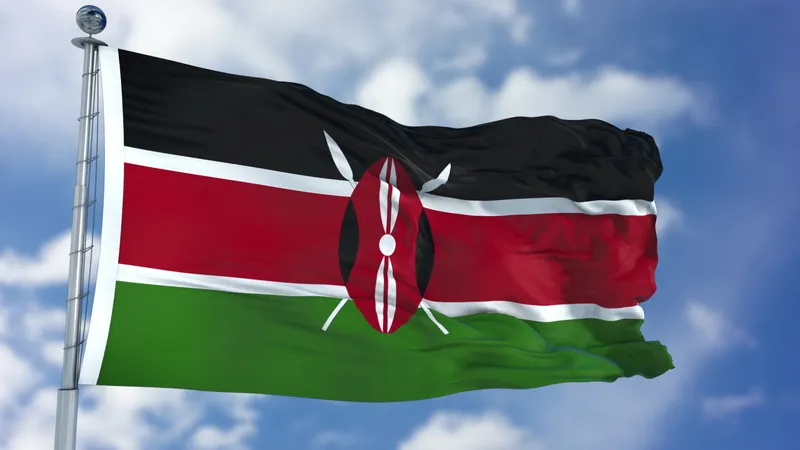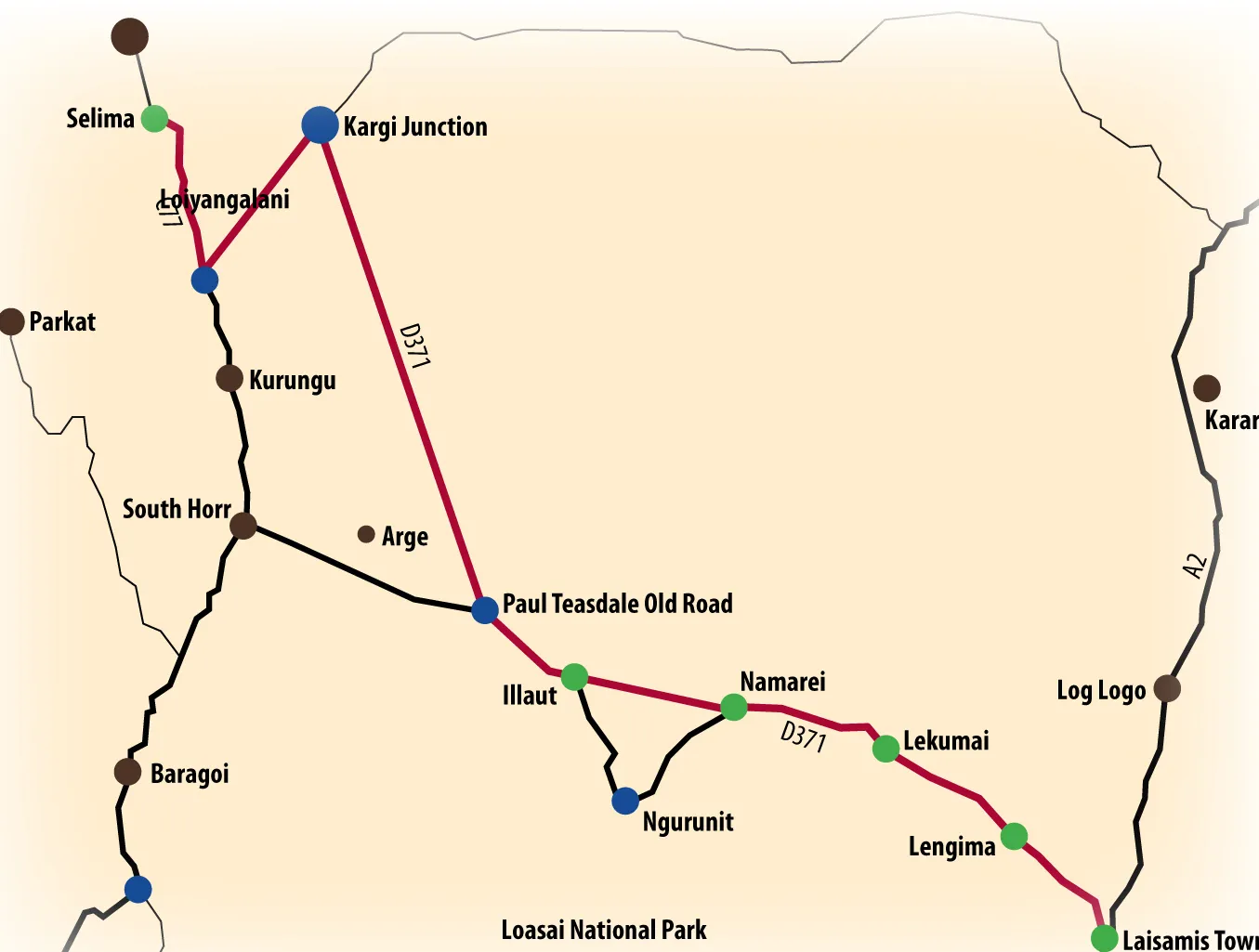
Kenya has commenced the process of rehabilitating, expanding and tolling of 657km of East Africa’s Northern Corridor that is anchored on the Indian Ocean port of Mombasa and which links the gateway with landlocked countries of Uganda, Rwanda, Burundi and parts of eastern Democratic Republic of Congo (DRC).
The rehabilitation and expansion of the heavily trafficked 483km Mombasa-Nairobi highway (A109) and the 174km Nairobi-Nakuru-Mau Summit highway (A104) are being implemented in several phases. These projects form part of Kenya’s drive to transform the 2,000km Northern Corridor into an effective tool for increasing trade and strengthening regional integration with seamless movement of exports and imports, especially to and from its landlocked neighbours.
On the Mombasa-Nairobi highway, two contracts have been awarded to two different Chinese firms for the 41.7km Mombasa-Mariakani and 21km Athi River-Machakos turn off road sections involving rehabilitation and dualling of the two stretches of the highway.
The US construction and engineering firm
“Bechtel has been working with the Government of Kenya for over two years to develop this strategic infrastructure priority project, which will support unlocking significant growth in Kenya and the region,” said Craig Albert, president of Bechtel’s global infrastructure business. “We will bring global megaproject capability and local commitment to deliver the Nairobi-Mombasa expressway to our high standards of quality, safety and sustainability. We’ll create infrastructure and skills legacies by partnering with local companies, suppliers, and directly employing and training Kenyans.”
As part of the delivery of the project, Bechtel will employ over 4,000 people and provide training and capacity building. Kenya’s wildlife and environment is critical to the country and the firm says that the project will respect communities, environment, and wildlife, focusing on reducing potential impact through the implementation of an international standard Environmental and Social Impact Assessment.
Bechtel says that the project has been structured to achieve early completion, under a fast-track delivery model, with concurrent design and construction, and with the first section, from Mombasa Road – Kyumvi to ICT Konza, scheduled to open in 2019. US and UK export credit agencies such as the US
“This contract shows continued international investor confidence in the Kenyan economy,” said Amjad Bangash, general manager for infrastructure - Europe, Africa and the Middle East, Bechtel.
Chinese infrastructure development firm Third Engineering Bureau of China City Construction Group has been picked as the preferred bidder for the Mombasa-Mariakani section.
It is not yet clear whether Bechtel could be awarded the remaining phases of the Mombasa-Nairobi highway expansion plan although procurement for the remaining parts is still at its initial stages.
Third Engineering Bureau of China City Construction Group will construct an additional carriageway that will increase the highway lanes to between four and six. The existing road alignment’s width is 7m to 14m excluding shoulders and central median.
With the exception of the newly reconstructed sections, KeNHA says most shoulders are 1.5m. The alignment also includes 29 bridges with several box and concrete pipe culverts according to the agency.
The Chinese contractor will also expand the horizontal curves to between 100m and 350m on the highway whose speed has been designed for 50km/hr at the junction of Kenyatta Avenue (A109) and Digo Road (A14) increasing to 100km/hr shortly after the Mariakani weighbridge on the way to Nairobi.
Three grade separated interchanges will be constructed at Changamwe to replace the existing at grade roundabout while a full interchange will be built at the Mikindani junction to separate local vehicles from through traffic, most of which are heavy trucks according to the project’s design brief.
The T-grade junction at Kwa Jomvu, which has been blamed for the long traffic delays and high accident rate, will be converted into a roundabout with adequate turning radius to improve safety according to KeNHA.
This project is expected to be completed by the end of 2019.
Growth of container volumes to and from the port of Mombasa in recent years has exacerbated the traffic congestion on this section because of the high number of light vehicles and heavy trucks and also the road’s continued deterioration over time.
At the port of Mombasa, Kenya Ports Authority Managing director Catherine Mturi-Wairi told a recent transport conference in Nairobi the completion of the first phase of the second container terminal has increased the containers into and out of East Africa creating demand for wider, reliable and modern road transport infrastructure.
“The new container terminal which is operational, is capable of handling fourth generation vessels of 6000 Twenty Foot Equivalent Units (TEUs) capacity and we look forward to the positive impact this will have on your businesses and regional economies,” she said.
Japan is financing the US$263 million second phase of the container terminal, which when completed is expected to increase the traffic volumes on the Mombasa-Nairobi highway. More than 76.7% of all transit cargo through the port is destined for Uganda while South Sudan, DRC, and Rwanda is taking 10.6%, 5.7% and 3.3% of the total cargo respectively.
Besides the progress made on the Second Container Terminal, Wairi said the modernisation and expansion of the Nairobi Inland Container Depot is also set to boost the trucking of exports and imports through the port of Mombasa, hence the need to expand the Mombasa-Nairobi highway to accommodate this surge in freight volumes.
“Upon completion, the new terminal will have the capacity to berth four ships of up to 100,000tonnes at once in contrast to the current maximum of one vessel of not more than 80,000tonnes at a time,” she added.
Wairi says the first six months of 2016 registered growth in the total cargo throughput of 1.4% having handled 13.406 million tonnes, up from 13.218 million tonnes handled in 2015. The volumes were boosted by the steady improvement of the ship turnaround time from 3.7 days in 2015 to three days in 2016 and shortening of container dwell time from 5.3 days to 4.3 days.
The road links from the port of Mombasa are also being improved. The second Nyali Bridge is being built, which will measure 600m while the project includes building an additional 400m of connecting roads. The bridge project is being handled under the PPP model as a design, finance, operate and maintain deal.
The Mombasa-Mariakani road project has been divided into four sections with the first 5.8km dual carriageway characterised by high vehicle and human traffic. This stretch is complex due to the intense commercial and residential activity on both sides of the road, poor drainage and blocked natural drainage because of the careless disposal of solid wastes.
KeNHA says the pavement in this section is worn out with several potholes and deformations and lacks designated parking areas. Drivers are forced to use the shoulders, which has narrowed the useful width of the road and slows down traffic movement. The condition of the road is similar on the next section of 9.7km that is a single carriageway between Changamwe and Miritini but which may require additional acquisition of land to accommodate the planned expansion.
The third section is after Miritini, where the road widens into a dual carriageway for 6km. This section was recently rehabilitated as part of the
The final section of the Mombasa-Mariakani road project is the 20.2km single carriageway between Mazeras and Mariakani weighbridge which was also recently reconstructed as part of the Maji ya Chumvi-Miritini project.
This section runs parallel to the Mombasa-Nairobi railway line with the additional carriageway slated for the right side of the existing one, after acquisition of extra land because the one available is inadequate for expansion.
Just before the Mariakani weighbridge, the project brief shows a new lane is underway to separate main traffic from those queuing to be weighed for compliance with axle load regulations. Additional vehicle traffic is expected by mid-2018 when the 10.5km link between the new completed second container terminal and Changamwe area along the Mombasa-Mariakani section of the Mombasa-Nairobi highway is complete.
The
Another Chinese contractor, China Railway 21st Bureau Group Ltd has been awarded the contract for the widening and improving of the 21km Athi River-Machakos turnoff section that is also part of the Mombasa-Nairobi highway.
The $51.2 million contract entails constructing a new carriageway within the existing road reserve but parallel to the existing carriageway. The carriageway comprises 7m-wide carriageway, 2m-wide shoulder and 12m-wide median according to KeNHA.
Pavement of the new carriageway, which has three bridges, consists of several layers that include 50mm asphalt concrete wearing course, 150mm dense bitumen macadam base, and 125-300mm-thick graded crushed stone sub-base according to the project brief.
Separately, KeNHA has shortlisted four consortiums for the design, finance, construction, operation, maintenance and transfer of sections of the 174km Nairobi-Nakuru-Mau Summit road specifically between Rironi and Mau Summit where poor condition and congestion has reduced the speed to 60km/h and the road capacity has reached saturation levels.
In the last quarter of 2016, KeNHA Director General Peter Mundinia announced the prequalification of four consortiums comprising construction firms from Portugal, Austria, Singapore, France, India, Turkey, Egypt and South Africa were prequalified for the design, finance, construct, operate, maintain and transfer contract for the highway.
The four consortia comprise the construction companies of Mota-Engil, Africa Infrastructure Investment Managers Seed Partnership, Orascom Construction, Itnl International, IL &FS Transportation Networks, Strabag, Group Five Construction, Kolin Insaat Turizm Sanayi ve Ticaret, VINCI Highways SAS, Meridian Infrastructure Africa Fund and VINCI Concessions SAS.
The carriageway, which has experienced inadequate upgrading and maintenance, will be dualled to four lanes although KeNHA says it will later increase it to six lanes depending upon traffic volumes. Mundinia has described the highway as, “one of the top 22 most dangerous roads in the world.”
The preferred EPC contractor, who is yet to be announced as of late July 2017, will strengthen 57.8km of the highway (A8) between Rironi and Naivasha and also operate and maintain 12.43km of the section between Gitaru and Rironi.
Kenya’s Public Private Partnership under the National Treasury has recommended three toll charging points at Kinungi, Gilgil and Sobeo on the existing A104 highway.
Mundinia said early this year that the Northern Corridor would be much cheaper and efficient once the expansion and improvement projects along the Mombasa-Nairobi-Nakuru highway are complete compared to the Central Corridor that is anchored on the port of Dar es Salaam in Tanzania, which is linked to Rwanda, Uganda and Burundi by road.
He estimates freight costs on the Northern Corridor particularly between Mombasa and Kampala to be $2.15/km. With the proposed toll cost of about $0.24/km on sections of the corridor, the total cost freight cost for moving freight will rise to $2.39/km. However, this is much less than the current $2.71/km on Tanzania’s Central Corridor.
“We have embraced the PPP model in line with global practices to help address the acute mismatch between traffic needs, existing infrastructure and financial deficits,” said Mundinia in June.
“Working with the private sector through this PPP model will offer the best solution to meeting our infrastructural needs that will move the country towards attainment of envisaged economic growth,” he said.







